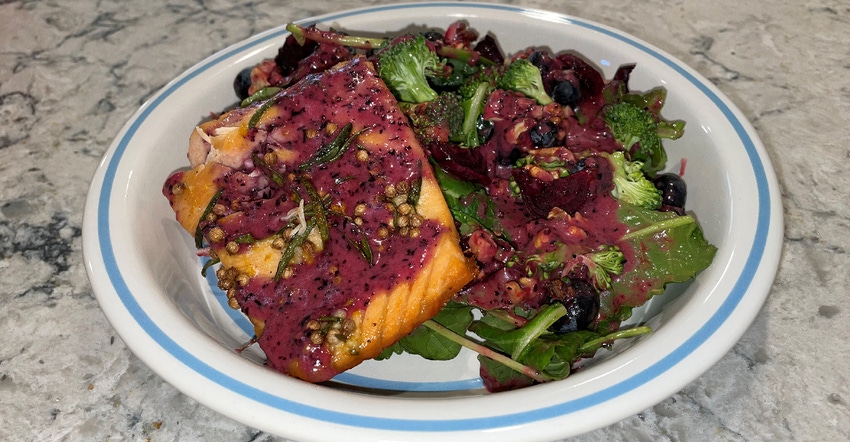February 3, 2021

If you’re looking to make some healthy changes to your diet, consider the Mediterranean diet. For the fourth year in a row, it ranked as the best overall diet by US News and World Report. It also claimed the top spot in five other lists: best diets for healthy eating, easiest diets to follow, best diets for diabetes, best plant-based diets and best heart-healthy diets.
So how do you get started eating Mediterranean when we live so far away from that famous sea? The Mediterranean diet is based on the traditional foods that people used to eat in countries like Italy, Greece and others around the Mediterranean back in the 1960s. Those Italians and Greeks were exceptionally healthy compared to Americans, and were at low risk for many lifestyle diseases. So, researchers began studying exactly what they were eating.
The Mediterranean diet focuses on plant-based foods, including fruits, vegetables, whole grains, breads, legumes, potatoes, nuts and seeds. The main dietary fat is extra virgin olive oil, and the diet pattern also includes moderate amounts of fish, poultry, dairy, eggs and red wine. Red meat typically plays a small part, often as Sunday dinner.
That pattern has found to improve health and prevent disease — especially heart disease. A large study, called the Predimed Study, looked at 7,447 individuals with a high risk of heart disease. For five years, participants followed one of three different diets: a Mediterranean diet with added extra virgin olive oil, a Mediterranean diet with added nuts and a low-fat diet control group. The risk of combined heart attack, stroke and death from heart disease was lower by 31% in the Mediterranean and olive oil group and 28% in the Mediterranean and nuts group. And dropout rates were twice as high in the control group compared with the two Mediterranean groups.
Results like that have been repeated over and over. Other studies are showing that the Mediterranean diet can help with weight loss, Type 2 diabetes and premature death.
The bottom line? This is an eating plan that’s worth looking into, even in landlocked central Illinois. Think fresh foods — nothing out of a box — prepared with a splash of olive oil and enjoyed with a glass of red wine.
Here’s a recipe from Hy-Vee’s Balance Magazine to get you started on eating the Mediterranean way. If you’re not sure about kale, try the baby kale; it’s much more tender. And massage it with a teaspoon or two of fresh orange juice and olive oil like the recipe encourages.
Kale Salad and Salmon With Blueberry Vinaigrette
Vinaigrette
½ cup fresh blueberries
2 tablespoons white balsamic vinegar
1 tablespoon honey
1 teaspoon Dijon mustard
⅛ teaspoon salt
3 tablespoons extra virgin olive oil
Salad and Salmon
1 pound salmon fillet
2 tablespoons extra virgin olive oil, divided
2 teaspoons fresh rosemary, finely chopped
1 teaspoon orange zest
½ teaspoon ground coriander
¼ teaspoon salt
3 cups baby kale leaves, stems removed
1 cup broccoli florets, cut into bite-size pieces
2 tablespoons fresh orange juice
½ cup fresh blueberries
1 large red beet, peeled, cooked and cut into thin wedges
¼ cup English walnuts
Preheat oven to 425 degrees F. Line a rimmed baking pan with foil; set aside.
To prepare Vinaigrette: Place blueberries, white balsamic vinegar, honey, Dijon mustard and salt in a blender. Cover and blend until pureed. Add olive oil and blend until smooth. Cover and refrigerate until ready to serve.
To prepare salmon, pat dry with paper towels and place on prepared baking pan. Combine 1 tablespoon oil, rosemary, orange zest, coriander and salt. Rub mixture on top of salmon. Bake for 10 to 15 minutes, or just until fish flakes when tested with a fork (145 degrees F).
For salad, toss together baby kale and broccoli in a large bowl. Drizzle remaining 1 tablespoon oil and orange juice over greens mixture. Gently massage with fingers until kale is dark green and tender. Toss in blueberries and beets.
Divide kale mixture and salmon among four serving plates. Sprinkle walnuts over top. Serve with Vinaigrette. Serves 4.
Per serving: 490 calories, 26 grams protein, 15 grams carbohydrates, 37 grams fat (6 grams saturated), 60 milligrams cholesterol, 2 grams fiber, 11 grams total sugars (4 grams added), 330 milligrams sodium
Ware is a registered dietitian with Southern Illinois University Medical School in Springfield. Send recipe ideas to her at [email protected]. The opinions of this writer are not necessarily those of Farm Progress/Informa.
About the Author(s)
You May Also Like






